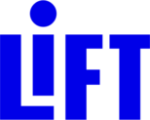The Center on Budget Policy and Priorities invited members of the press to the launch of a new report – Robust COVID Relief Achieved Historic Gains Against Poverty and Hardship, Bolstered Economy – that examines the impact of the American Rescue Plan and Child Tax Credit.
As a part of this conversation, LIFT CEO Michelle Rhone-Collins prepared a written statement on the impact of the CTC on families and how its expiration affects the well-being of our communities. Read her full statement below.
My name is Michelle Rhone-Collins, and I am the CEO of LIFT, a national organization working to break the cycle of poverty by investing in parents. LIFT’s one-on-one integrated financial, educational, and employment coaching program helps parents set and achieve goals – such as going back to school, improving credit, eliminating debt, or securing a living wage; goals that put low-income families on the path toward economic mobility. We provide this along with direct cash payments through our Family Goal Fund to help families rebound in crisis, make ends meet month to month, and to leverage opportunity.
We fight for humanity in the social service system and economic justice for all, as the harsh reality is that the very structures that are supposed to support families living in poverty often reflect a deep lack of trust. A history steeped in institutional and structural racism has created a racial wealth gap, with white households having at least 10 times the wealth of Black households. This has perpetuated the cycle and kept families trapped. Poverty, like wealth, is passed down from generation to generation. The pandemic only unearthed and exacerbated preexisting conditions of inequity that made poor communities of color disproportionately impacted in every way.
Early in the pandemic, we turned directly to LIFT members (how we refer to our program participants) to listen and respond. We learned that 90% either lost or were at risk of losing income. They were most concerned about being able to cover rent, utilities, and food, and the average expected need to stay afloat was $1,000 for that month.
In response, we distributed $1,400 each (or more than $1M in emergency cash) to all the families in our program, and over the next six months, we saw employment rates go up, not down – contrary to prevailing stereotypes about “handouts” making people “lazy.” When the Child Tax Credit payments started in July 2021, we once again witnessed a continuous rise in employment and investment in education from our families.
Let me break this down for you. In winter 2020 at the peak of pandemic, 42% of members were employed, down from 57% pre-pandemic. Over the next several months, LIFT members focused on returning to work, despite the continued challenges. By July 2021, 50% of members were employed, and 50% were making progress towards educational goals. Between when families started receiving CTC support in July 2021 and January of this year, LIFT members’ workforce participation and educational pursuits went UP, with 56% of LIFT members employed, and 64% making progress in education.
Parents reinvest in themselves, their children, and their goals when they have access to funds like the CTC — dismantling the tired tropes and notions that people living in poverty “make poor money decisions,” or “don’t know how to manage their money.” The truth is that they in fact know their needs better than any program ever will. We’ve heard from members how the CTC was a critical resource in a time of need with parents using payments for basic needs like purchasing food for their family, housing, car payments, debt payments, light bills, school supplies, and childcare. Receiving payments that come “on time,” (i.e., regular and able to be planned for), coupled with coaching support, was a game changer.
Families teetering on the edge of poverty have had the rug pulled from under them again as the lapse in benefits sends millions back into crisis mode in a place of needing to chose between food on the table or rental. Thinking about long-term goals like going back to school or paying off debt becomes unimaginable when those immediate needs can’t be met first. And our parents have told us that inflation has made essentials like food, gas, and transportation even greater hardships. Prices going up without commensurate supports puts further stress on families’ finances and well-being.
We know from experience that parents are motivated, resilient, and thrive when they have access to the same resources we all need to succeed. When low-income families have more financial slack, they are empowered to pursue better career and educational opportunities. That is why LIFT launched the Family Goal Fund in 2018, that is why we invested heavily in unrestricted emergency relief early in the pandemic, and that is why we advocate for continued expansion of the CTC. If there’s one thing that the CTC and our own Family Goal Fund has taught us, it’s that giving money to families with dignity and trust works. LIFT’s small-dose infusions are insufficient when considering the millions of families facing crises today. We need broad, federal interventions like the CTC to protect families, to close the racial wealth gap, and to end childhood poverty.
